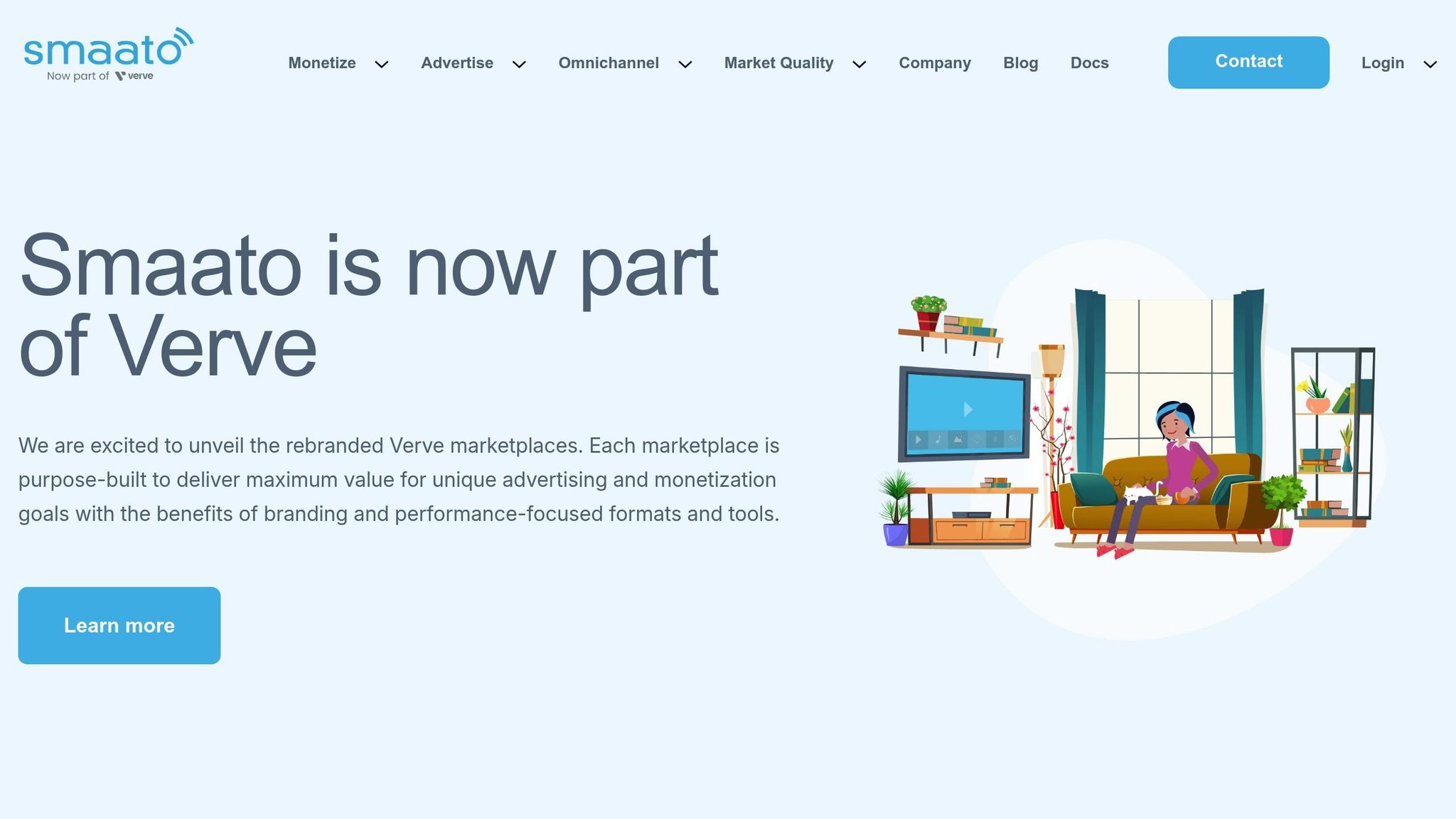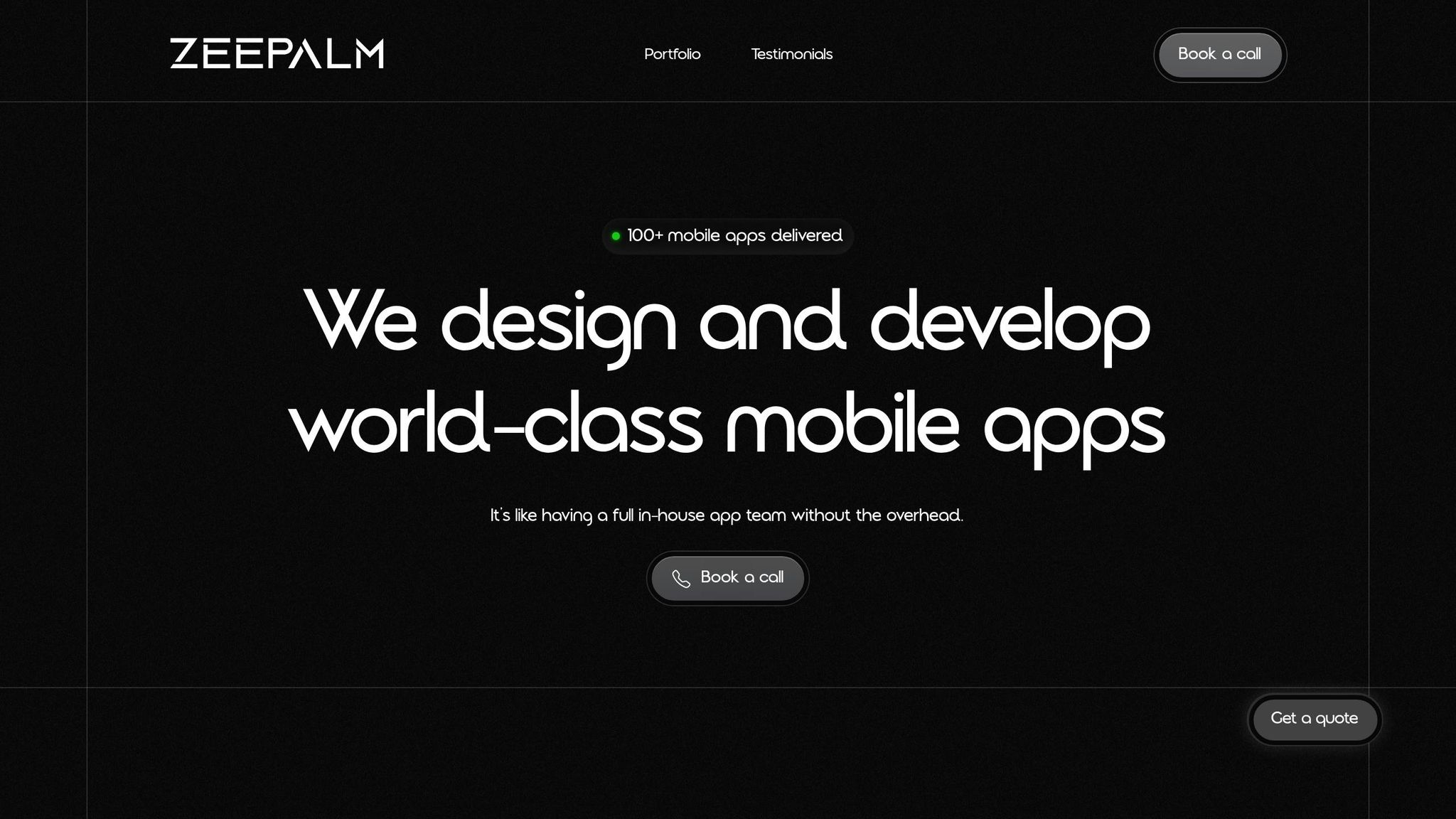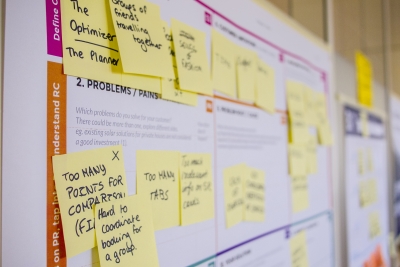App launch speed is crucial for user satisfaction. Slow launch times lead to frustrated users, negative reviews, and app abandonment. 49% of users expect apps to start in 2 seconds or less, and 60% abandon an app after one usage if they face performance issues.
Here are 10 tips to optimize app launch times:
- Optimize Resource Loading
- Use resource qualifiers for different devices
- Compress and cache images
- Load resources only when needed
- Minimize Cold Start Time
- Defer expensive work until after first frame
- Use placeholder content
- Prioritize work and reduce heavy initialization
- Efficient Memory Management
- Avoid unnecessary allocations
- Use efficient data structures
- Optimize bitmap usage
- Detect and fix memory leaks
- Async Operations and Threading
- Move heavy operations off the main thread
- Analyze CPU/memory usage spikes
- Optimize code with efficient data structures
- Image Compression and Optimization
- Compress image sizes
- Reduce number of images
- Use WebP image format
- Lazy Initialization and Caching
- Delay object creation until needed
- Useful for database connections, resource-intensive objects, caching
- Minimize Network Calls
- Batch requests, cache data, optimize API calls
- Use efficient data formats like JSON or Protocol Buffers
- Implement caching mechanisms
- Effective UI/UX Design
- Minimize work and prioritize tasks
- Optimize view hierarchy and lazy loading
- Reduce dependencies on external frameworks
- Profile and Benchmark
- Use profiling tools to identify bottlenecks
- Benchmark regularly to track progress
- App Launch Strategy
- Analyze app startup
- Prioritize critical tasks
- Optimize resource loading
- Implement efficient data storage
By following these tips, developers can significantly reduce app launch times, resulting in higher user engagement and satisfaction.
1. Optimize Resource Loading
Optimizing resource loading is a crucial step in reducing app launch time. This involves managing how your app loads and utilizes resources such as images, videos, and other media.
Effective Resource Loading Strategies
Here are some tips to help you optimize resource loading:
StrategyDescriptionUse Resource QualifiersSpecify different versions of resources for different screen densities, languages, and orientations to ensure your app loads the correct resources for the user's device.Compress and Cache ImagesCompress images to reduce their file size, making them faster to load. Cache images to reduce the number of network requests.Smart Resource LoadingLoad resources only when they are needed. For example, load images only when they come into view, rather than loading all images at once.
By implementing these strategies, you can reduce the amount of data that needs to be loaded, making your app launch faster and providing a better user experience. In the next section, we will discuss how to minimize cold start time.
2. Minimize Cold Start Time
Cold start time is the time it takes for your app to launch from scratch. Minimizing this time is crucial for a seamless user experience.
Identify Slow Startup Stages
To minimize cold start time, you need to identify the slow startup stages in your app. Use an app performance monitoring tool to track the time taken by each stage of the app launch process. This will help you pinpoint the areas that need optimization.
Strategies to Minimize Cold Start Time
Here are some strategies to help you minimize cold start time:
StrategyDescriptionDefer Expensive WorkDefer expensive work, such as network requests or heavy computations, until after the first frame is rendered.Use Placeholder ContentUse placeholder content for items that are not critical for launch.Prioritize WorkPrioritize work and reduce heavy activity initialization to minimize cold start time.
By implementing these strategies, you can minimize cold start time and provide a faster and more seamless user experience. In the next section, we will discuss efficient memory management techniques to further optimize app launch time.
3. Efficient Memory Management
Efficient memory management is crucial for reducing app launch time. When an app consumes too much memory, it can lead to slow performance, crashes, and even app termination. Here are some strategies to help you manage memory efficiently:
Avoid Unnecessary Allocations
Avoid creating unnecessary objects, especially in performance-critical sections of your code. This can help reduce memory allocation and garbage collection, which can slow down your app.
Use Efficient Data Structures
Choose data structures that minimize memory usage. For example, use arrays instead of linked lists when possible.
Optimize Bitmap Usage
Bitmaps can consume a significant amount of memory. Optimize bitmap usage by:
StrategyDescriptionCompressing ImagesReduce image file size to minimize memory usage.Using Efficient Image FormatsUse image formats that require less memory.Releasing Bitmaps PromptlyRelease bitmaps when they are no longer needed to free up memory.
Detect Memory Leaks
Memory leaks can occur when objects are not properly released from memory. Use tools like Android Studio Profiler or Systrace to detect memory leaks and fix them promptly.
By implementing these strategies, you can reduce memory usage, prevent crashes, and improve overall app performance. In the next section, we will discuss async operations and threading to further optimize app launch time.
4. Async Operations and Threading
Async operations and threading are crucial techniques to reduce app launch time. By moving heavy operations off the main thread, you can significantly improve your app's performance and responsiveness. Here's how to do it:
Analyze CPU/Memory Usage Spikes
Use tools like Profiler to analyze CPU and memory usage spikes during app startup. This will help you identify which method calls are causing performance bottlenecks.
Optimize Code
Once you've identified the performance bottlenecks, analyze the code to determine the root cause. It could be due to inefficient memory management, unnecessary allocations, or inefficient data structures. Optimize your code by:
Optimization TechniqueDescriptionEfficient Data StructuresChoose data structures that minimize memory usage.Avoid Unnecessary AllocationsAvoid creating unnecessary objects, especially in performance-critical sections of your code.Efficient Image FormatsUse image formats that require less memory.
By implementing async operations and threading, you can reduce app launch time, improve performance, and provide a better user experience. In the next section, we will discuss image compression and optimization to further optimize app launch time.
5. Image Compression and Optimization
Image compression and optimization are crucial steps in reducing app launch time. Large image files can slow down your app's performance, leading to a poor user experience.
Compress Image Sizes
Compressing image sizes reduces the memory footprint of your app. You can use tools like Online Image Optimizer, SuperGIF, JPEG & PNG Stripper, or Smush it to compress your images. Be careful not to compromise on quality.
Reduce the Number of Images
Using too many images can slow down your app's performance. Instead of using multiple images to decorate your app, try to use color palettes and other lighter elements.
Use WebP Images
WebP is an image file format from Google that provides lossy compression (like JPEG) as well as transparency (like PNG). Using images in WebP format instead of PNG can reduce the size of an image by about 75%, resulting in less memory consumption and better performance.
Here are some image compression and optimization techniques:
TechniqueDescriptionCompress Image SizesReduce image file size to minimize memory usage.Reduce the Number of ImagesUse fewer images to decorate your app.Use WebP ImagesUse WebP format instead of PNG to reduce image size.
By implementing these image compression and optimization techniques, you can significantly reduce your app's launch time and improve overall performance. In the next section, we will discuss lazy initialization and caching to further optimize app launch time.
6. Lazy Initialization and Caching
Lazy initialization and caching are essential techniques to reduce app launch time on iOS and Android. By deferring the initialization of objects until they are actually needed, lazy initialization conserves memory and other system resources, leading to faster application startup times and improved response times.
What is Lazy Initialization?
Lazy initialization is a technique that delays the creation of objects until they are first requested. This approach helps to:
- Conserve Resources: Avoid premature allocation of objects that may never be used.
- Improve Performance: Reduce the overhead associated with resource allocation and initialization.
When to Use Lazy Initialization
Lazy initialization is useful in scenarios where:
ScenarioDescriptionDatabase ConnectionsDelay initializing database connections until they are first requested.Resource-Intensive ObjectsDefer creating objects that require significant computational resources or have complex initialization logic.Caching MechanismsInstantiate cache objects only when a cache miss occurs, minimizing memory overhead.
By implementing lazy initialization and caching, you can significantly reduce your app's launch time and improve overall performance. In the next section, we will discuss minimizing network calls to further optimize app launch time.
sbb-itb-8abf120
7. Minimize Network Calls
Minimizing network calls is crucial to reduce app launch time on iOS and Android. Network requests can significantly slow down your app's startup time, leading to a poor user experience.
Optimize Network Request Frequency
Limit the number of network requests made during app launch. You can achieve this by:
Optimization TechniqueDescriptionBatching requestsCombine multiple requests into a single request to reduce the number of network calls.Caching frequently accessed dataStore frequently accessed data locally to avoid making repeated network requests.Optimizing API callsEnsure API calls are optimized for minimal data transfer and efficient processing.
Use Efficient Data Formats
Choose efficient data formats to reduce the payload size of network requests. You can achieve this by:
Data FormatDescriptionJSON or Protocol BuffersThese formats are more efficient than XML and can reduce payload size.Compressed dataUse compression techniques like Gzip to reduce the size of data transferred over the network.
Implement Caching Mechanisms
Implement caching mechanisms to store frequently accessed data locally. You can achieve this by:
Caching MechanismDescriptionHTTP cachingImplement HTTP caching to store responses locally and avoid repeated network requests.Cache invalidationEnsure cache invalidation mechanisms are in place to update cached data when necessary.
By minimizing network calls and optimizing network requests, you can significantly reduce your app's launch time and improve overall performance. In the next section, we will discuss effective UI/UX design principles to further optimize app launch time.
8. Effective UI/UX Design
Effective UI/UX design is crucial for reducing app launch time on iOS and Android. A well-designed user interface can significantly improve the overall user experience.
Minimize Work and Prioritize Tasks
To optimize app launch time, minimize work and prioritize tasks. Defer non-essential tasks until after the app has launched. Identify critical tasks and focus on those first.
Optimize View Hierarchy and Lazy Loading
Optimize the view hierarchy and implement lazy loading to reduce app launch time. Defer loading non-essential views and data until they are needed.
Reduce Dependencies on External Frameworks and Dynamic Libraries
External libraries and frameworks can increase app launch time. Reduce dependencies on external frameworks and dynamic libraries by identifying and removing non-essential ones.
Here are some effective UI/UX design principles to reduce app launch time:
PrincipleDescriptionMinimize WorkDefer non-essential tasks until after the app has launched.Optimize View HierarchyDefer loading non-essential views and data until they are needed.Reduce DependenciesRemove non-essential external frameworks and dynamic libraries.
By implementing these effective UI/UX design principles, you can significantly reduce app launch time and improve the overall user experience. In the next section, we will discuss the importance of profiling and benchmarking to further optimize app launch time.
9. Profile and Benchmark
To optimize app launch time, it's essential to profile and benchmark your app's performance. This helps identify areas that need improvement.
Profile Your App
Use profiling tools to measure the time spent on different tasks during app launch. This information helps you identify areas that need optimization.
Benchmark Your App
Benchmarking involves measuring your app's launch time under different conditions. This helps you set a target launch time and track progress.
Tips for Profiling and Benchmarking
TipDescriptionUse Profiling ToolsIdentify performance bottlenecks and optimize accordingly.Benchmark RegularlyTrack progress towards your target launch time.Profile and Benchmark TogetherIdentify areas for improvement and optimize app launch time.
By profiling and benchmarking your app, you can identify areas for improvement and optimize app launch time, leading to a better user experience. In the next section, we will discuss app launch strategy and how to implement it effectively.
10. App Launch Strategy
A well-planned app launch strategy is crucial for optimizing app launch time. Here are some tips to help you develop an effective strategy:
Analyze App Startup
Use profiling tools to analyze CPU and memory usage during app startup. This helps identify areas that need optimization.
Prioritize Tasks
Prioritize tasks based on their importance and complexity. Focus on critical tasks that are essential for the app's functionality and delay non-essential tasks until later.
Optimize Resource Loading
Optimize resource loading by using lazy loading, caching, and compressing resources. This reduces the amount of data that needs to be loaded, resulting in faster app launch times.
Efficient Data Storage
Implement efficient data storage solutions, such as using a database or file storage, to reduce the amount of data that needs to be loaded during app startup.
Here are some key considerations for an effective app launch strategy:
ConsiderationDescriptionAnalyze App StartupIdentify areas that need optimization.Prioritize TasksFocus on critical tasks and delay non-essential tasks.Optimize Resource LoadingReduce the amount of data that needs to be loaded.Efficient Data StorageImplement efficient data storage solutions.
By following these tips, you can develop an effective app launch strategy that improves app performance, reduces launch times, and enhances the overall user experience.
Conclusion
Optimizing app launch time is crucial for a good user experience. By following the 10 tips outlined in this article, developers can significantly reduce app launch times, resulting in higher user engagement and satisfaction.
Key Takeaways
Here are the main points to remember:
TipDescriptionMinimize cold start timeReduce the time it takes for your app to launch from scratch.Optimize resource loadingManage how your app loads and utilizes resources such as images, videos, and other media.Prioritize tasksFocus on critical tasks and delay non-essential tasks until later.Profile and benchmarkMeasure and track your app's performance to identify areas for improvement.
By implementing these tips, developers can create a faster, more efficient, and more engaging app launch experience that delights users and sets their app apart from the competition.
Remember, every second counts when it comes to user satisfaction. By continuously measuring and optimizing app performance, developers can ensure a seamless user experience that keeps users coming back for more.
FAQs
How to Optimize App Startup Time?
To optimize app startup time, you need to analyze the overall thread state, select the app startup time, and look at overall thread slices. The main thread needs to be responsive at all times. Tools like the Android Studio Profiler and Perfetto provide a detailed overview of the main thread and how much time is spent in each stage.
How to Reduce App Launch Time on iOS?
To reduce app launch time on iOS, you need to:
StepDescriptionUnderstand app activationsLearn about cold and warm launchesGather metricsMeasure your app's launch timeProfile your appIdentify areas for improvementReduce dependenciesMinimize external frameworks and dynamic librariesUse mergeable dynamic librariesOptimize your codeRemove static initializersSimplify your code
How to Load Apps Faster?
To load apps faster, follow these tips:
TipDescriptionEfficient code practicesWrite clean and optimized codeOptimize images and mediaReduce file sizesLeverage caching techniquesStore frequently accessed dataAsynchronous loadingLoad data in the backgroundImprove server response timesOptimize your serverModern web technologiesUse the latest technologies
By following these tips, you can significantly reduce app launch times and improve the overall user experience.










